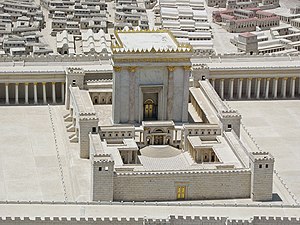
The Second Temple period in Jewish history began with the end of the Babylonian captivity and the Persian conquest of the Babylonian Empire in 539 BCE. A new temple to replace the destroyed Solomon's Temple was built in Jerusalem by the returnees, and the Second Temple was finished around 516 BCE. Second Temple Judaism was centered around the religious leadership of the Second Temple, and lasted for six centuries. The Persians were largely tolerant of Judaism. Persian rule lasted for two centuries, but came to an end with the conquests of Macedonia under Alexander the Great in 332 BCE. Judea and the Eastern Mediterranean region came under Greek influence during the resulting Hellenistic period; Hellenistic Judaism blended both Greek and Jewish traditions. Judea was ruled in this period first by the Ptolemaic Kingdom and then by the Seleucid Empire, Greek states formed after the breakup of Alexander's Macedonian empire. The Maccabean Revolt of 167–142 BCE was initially a fight for Judean autonomy against a suppression of traditional Judaism by Seleucid King Antiochus IV, and later sought outright independence from Greek rule. The revolt's success brought about the formation of an independent Hasmonean kingdom of Judea, named for the family which had led the Jewish resistance.
The Hasmoneans ruled until 63 BCE, when they were reduced to client king status as puppets of the Roman Republic. The Hasmonean line was deposed in 37 BCE, and King Herod the Great took control as ruler of the Herodian kingdom, with the approval of Rome. Herod's death in 4 BCE led to both the Herodian Tetrarchy, in which smaller regions were ruled by members of his family, and periods of direct Roman control by the governors of Roman Judea. Direct Roman rule of Judea was generally disliked, and provoked resistance and rebellion. The era came to an end with the First Jewish–Roman War of 66–73 CE. The Jewish revolt against the Roman Empire was unsuccessful, Jerusalem was conquered in 70 CE, and the Second Temple was destroyed.
This timeline focuses both on political events in Judea and the surrounding regions, as well as issues related to wider diaspora Judaism practiced elsewhere. Many of the dates in ancient sources are given in terms of the Seleucid era (SE) and the Ancient Macedonian calendar, which do not always map cleanly to Julian calendar dates, leading to some unavoidable uncertainty.